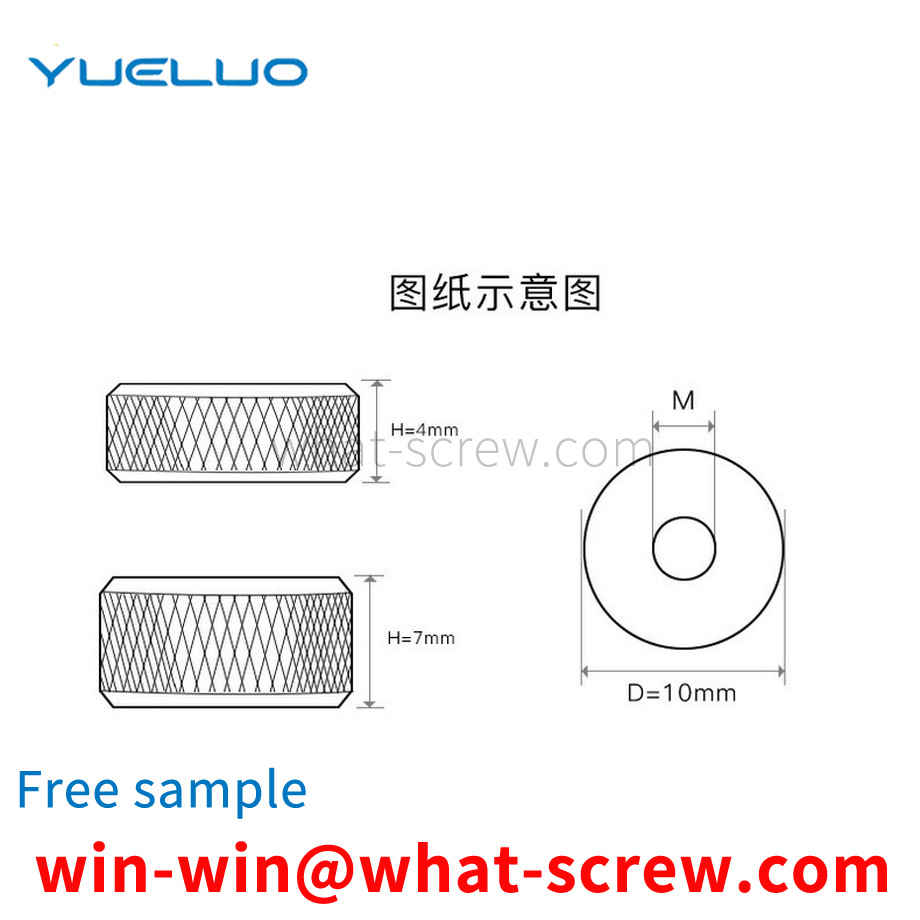What is the tolerance range of precision screws?
What is the tolerance range of precision screws?
Service Hotline
+86760-8787 8587We have more than ten years of experience in the production of screw industry, the main products are: ring hook screw nut, zinc-nickel alloy bolt, hex full-tooth screw, nylon flat head bolt, through-hole hexagonal rivet stud, extended outer screw, handle Screws, external tooth stop washers, countersunk head socket head cap screws, ingot nuts, t-block t-slot t-nuts, plastic support columns, countersunk head nylon screws, flat-shaped double round keys, modern automobile self-locking nuts and other fasteners , Due to the different materials and specifications of the products, the prices are also different, if necessary, please contact us.


Spring washers are widely used in the load-bearing and non-load-bearing structures of general mechanical products. They are characterized by low cost and easy installation. They are suitable for parts with frequent assembly and disassembly. Quick and easy automatic selection of washers is included, but the anti-loosening ability of spring washers is very low! Especially in European and American countries that require high reliability, the adoption rate is extremely low, especially the important load-bearing structural connection parts have long been abandoned. Our country still has some applications in the military industry, but it has been improved to stainless steel. Steel spring washers have long been banned in CASC! It is also said to be very unsafe, because there are two reasons: 1 is circle rise and 2 is hydrogen embrittlement.

Ordinary thread Ordinary coarse thread: Feature code M+ Nominal diameter + Rotation + thread tolerance zone code (pitch diameter, top diameter) - Rotation length Ordinary fine thread: Feature code M+ Nominal diameter * thread pitch + direction of rotation + thread tolerance With code (middle diameter, top diameter) - the length of screwing is omitted for right-handed threads, and the left-handed thread is represented by LH. M 16-5g6g means coarse thread ordinary thread, nominal diameter 16, right-handed, the thread tolerance zone is 5g in the middle diameter and 6g in the major diameter, and the screwing length is considered as the medium length. M16×1 LH-6G means fine thread ordinary thread, nominal diameter 16, pitch 1, left-handed, thread tolerance zone medium diameter and major diameter are both 6G, and the screwing length is considered as medium length. The labeling format is: feature code (cylindrical pipe thread is represented by G, conical pipe thread is represented by NPT) + size code + tolerance grade code + rotation direction G1A--LH represents inch non-threaded sealing pipe thread, size code 1in, left-handed, tolerance The grade is A grade. Rcl/2 means inch thread seal taper pipe thread, size code 1/2in, right-handed.


Ordinary T-bolts, the bolt head is rectangular, the screw part and the bolt head are T-shaped, and the width of the head is smaller than the width of the opening part of the T-slot, so that the head of the T-bolt can extend from the length of the T-slot. Insert the T-slot into the T-slot at any position in the direction. When the workpiece needs to be fixed, turn the T-bolt 90 degrees so that the length of the head is perpendicular to the T-slot, hook the inside of the opening of the T-slot, and screw it by tightening The nut on the T-bolt threaded rod holds the workpiece in place. The T-bolt of this structure can easily connect the bolt and the base piece quickly, and is widely used, but there are also some shortcomings, due to the contact area between the head of the T-bolt and the inner side of the opening of the T-slot. If it is too small, the frictional resistance is correspondingly small. On the one hand, the bolts are easy to follow the rotation during the process of tightening the nut. Unreliable.

NPT, PT, G are all pipe threads. NPT is the abbreviation of National (American) Pipe Thread, which belongs to the American standard 60-degree taper pipe thread, which is used in North America. National standards can be found in GB/T12716-1991 PT is the abbreviation of Pipe Thread, which is a 55-degree sealed conical pipe thread, which belongs to the Whitworth thread family and is mostly used in Europe and the Commonwealth of Nations. Commonly used in water and gas pipe industry, the taper is specified as 1:16. The national standard can be found in GB/T7306-2000 G is a 55 degree non-threaded sealing pipe thread, which belongs to the Whitworth thread family. Marked as G stands for cylindrical thread. National standards can be found in GB/T7307-2001 In addition, the 1/4, 1/2, 1/8 marks in the thread refer to the diameter of the pipe, and the unit is inches. People in the industry usually refer to thread size in points, 1 inch equals 8 points, 1/4 inch is 2 points, and so on. G seems to be the general name for pipe threads (Guan), and the division of 55 and 60 degrees is functional, commonly known as pipe circle. That is, the thread is machined from a cylindrical surface. ZG is commonly known as pipe cone, that is, the thread is made of a conical surface. The general water pipe joints are like this. Rc means conical internal thread ZG means taper pipe thread, 3/4 means inch mark, which is 3/4 inch conical pipe Thread, there is in the Hardware Manual. The national standard stipulates that the major diameter of ZG 3/4 thread is 26.44 mm. Please refer to Metric, American and British Thread Standard Manual (Third Edition). Its representation method should be: ZG 3 /4″. Among them (〃) is the representative symbol for inches. One inch is equal to 8 inches. The origin of 3/4 is 6/8=3/4. Commonly known as 6 points. Similarly, the major diameter of ZG 1/2″ thread≈21 mm. Commonly known as 4 points. ZG 1″ thread diameter ≈ 33 mm. Commonly known as 1 inch. ZG 1 1/2″ thread pipe outer diameter ≈ 48 mm. Commonly known as 1 inch and a half. Taper pipe thread is very similar to pipe thread, the difference is Only in the taper. Note that the basic size of the pipe thread and ordinary thread is different. DN is the nominal diameter

The above content is uploaded by Yueluo or the Internet. If there is any copyright issue, please contact [email protected].

What is the tolerance range of precision screws?

How to choose the right stainless steel screw manufacturer?

Why is there an R angle under the head of the hexagon head s...

We have more than ten years of experience in screw industry ...

We have more than ten years of experience in screw industry ...

We have more than ten years of experience in screw industry ...

We have more than ten years of production experience in the ...